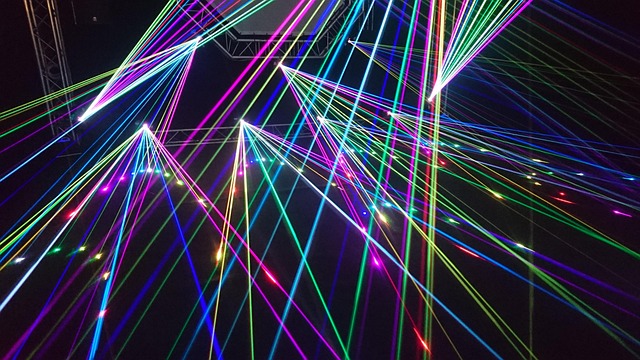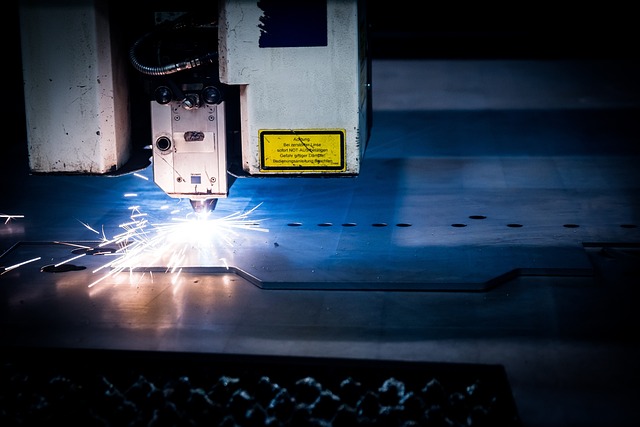Laser skin treatments, using focused light beams, offer effective, non-invasive brightening for hyperpigmentation, age spots, and sun damage. Advanced lasers target melanin production, stimulating collagen while minimizing cell damage. Popular types include IPL, Nd:YAG, fractional lasers (like Fraxel), and CO2 lasers, catering to diverse skin needs. Consulting a dermatologist is crucial for suitability assessment, as side effects vary by skin type. Post-care instructions, including sun protection, ensure optimal results with minimal risks. Laser treatments surpass alternatives like creams, peels, or microdermabrasion for precise, uniform outcomes with less downtime.
Laser skin brightening treatments have gained popularity as a non-invasive way to achieve even, radiant skin. This article delves into the world of laser technology for skin care, exploring its mechanisms and advantages. We’ll guide you through the process, from understanding different laser types to determining if you’re a suitable candidate. Learn about safety measures, recovery, and how lasers compare with other brightening methods, empowering you to make informed decisions regarding these advanced laser skin treatments.
Understanding Laser Skin Brightening Technology

Laser skin brightening technology has emerged as a popular and effective non-invasive skincare procedure. This advanced treatment utilizes specific wavelengths of light from lasers to target and break down melanin, the pigment responsible for skin discoloration. By carefully selecting the right laser type and energy levels, professionals can safely and precisely penetrate the skin’s upper layers, stimulating collagen production while reducing the appearance of age spots, sun damage, and uneven skin tone.
Compared to traditional chemical peels or topical creams, laser skin treatments offer faster results and less downtime. Modern lasers are designed with precise targeting in mind, minimizing damage to surrounding healthy skin cells. This targeted approach ensures that only the problem areas are treated, making it a highly effective solution for achieving a brighter and more even complexion.
Benefits and Expectations of Laser Treatments

Laser skin treatments have gained significant popularity due to their multitude of benefits for achieving brighter and more even-toned complexions. These non-invasive procedures use concentrated beams of light to target specific skin concerns, offering a safe and effective alternative to chemical peels or aggressive exfoliation methods. One of the key advantages is their ability to stimulate collagen production, which helps improve skin texture and reduce fine lines and wrinkles over time.
When it comes to expectations, laser treatments provide remarkable results for various skin types and conditions. Many patients experience noticeable improvements in skin brightness and tone after just a few sessions. Common concerns like sun damage, age spots, and hyperpigmentation can be significantly reduced, giving the skin a healthier, more radiant appearance. While individual outcomes may vary, consistent and positive results have been consistently reported by those who commit to the recommended treatment plan.
Different Types of Lasers for Skin Lightening

In the realm of laser skin treatments, various types are specifically designed for skin brightening and hyperpigmentation reduction. The most common lasers used include Intense Pulsed Light (IPL) and Q-switched Nd:YAG lasers. IPL works by emitting light at different wavelengths to target melanin in the skin, making it an effective treatment for uneven skin tone and sunspots. On the other hand, Q-switched Nd:YAG lasers use a concentrated beam to break up melanin deposits, stimulating collagen production and leading to improved skin texture and brightness.
Additionally, fractional lasers like Fraxel and CO2 lasers are also popular choices. Fractional lasers create tiny holes in the skin, triggering a healing response that results in smoother, brighter skin. CO2 lasers, though more aggressive, offer deeper penetration to address severe hyperpigmentation. Each laser type has its advantages and is suited for different skin types and conditions, ensuring tailored skin brightening treatments for folks seeking radiant, even-toned complexions.
Candidate Selection: Who is a Good Fit?

Laser skin treatments for brightening have gained significant popularity due to their effectiveness in reducing age spots, hyperpigmentation, and other skin discolourations. However, not everyone is a good candidate for this procedure. Ideal candidates typically have healthy skin with mild to moderate sun damage, evenness in skin tone, and realistic expectations. It’s crucial to consult with a dermatologist or certified laser specialist who can assess your skin condition, discuss potential risks and benefits, and determine if laser skin treatments are suitable for you.
During the consultation, factors such as your medical history, current medications, and any previous skin treatments will be considered. Those with sensitive skin, certain medical conditions like rosacea or eczema, or taking specific medications that can increase skin sensitivity might not be appropriate candidates. Additionally, individuals with deeper skin tones should exercise caution as lasers may cause temporary hypopigmentation (lightening of skin) in darker-skinned individuals.
Safety Precautions and Potential Risks

Laser skin treatments, while promising brighter, more even complexions, come with safety precautions and potential risks that should not be overlooked. It’s crucial to consult a qualified dermatologist before undergoing any procedure. They can assess your skin type, medical history, and specific concerns to determine if laser therapy is suitable for you.
During treatment, eye protection is essential, as the laser can cause serious damage to the eyes. The procedure may also lead to temporary redness, swelling, and sensitivity of the treated area. In rare cases, it can cause blistering or permanent changes in skin color. Long-term risks are less common but include potential pigmentation issues and scarring if not performed correctly. Proper aftercare, including avoiding sun exposure and using recommended products, is vital to minimize these risks and maximize the benefits of laser skin brightening.
Post-Treatment Care and Recovery Tips

After a laser skin brightening treatment, proper post-care is essential for optimal results and to minimize any potential side effects. It’s crucial to listen to your dermatologist’s aftercare instructions, as they may vary depending on the specific laser used and your skin type. Generally, you can expect some redness and mild irritation in the treated area, which typically subsides within a few days. Keep the treated skin clean and moisturized; using gentle, fragrance-free products recommended by your dermatologist can help soothe and heal the skin. Avoid direct sun exposure and always use broad-spectrum sunscreen with at least SPF 30 when going outdoors.
In the days following the treatment, be mindful of certain activities. Steer clear of saunas, hot tubs, or any activity that raises your body temperature as it can cause further irritation. Refrain from using harsh exfoliants or retinol products for a few days to prevent discomfort. It’s also advisable to avoid makeup for 24 hours after the treatment. Remember, proper post-care is an integral part of laser skin treatments, ensuring your skin recovers smoothly and you see the full benefits of the procedure.
Comparisons with Other Skin Brightening Methods

When compared to other skin brightening methods, laser skin treatments offer several advantages. Topical creams and chemical peels can be effective but often require consistent application and may cause irritation or side effects. Microdermabrasion and intense pulsed light (IPL) treatments have their merits, but lasers provide more precise targeting of melanin-producing cells, leading to faster and more uniform results.
Moreover, laser skin treatments are less invasive than surgical options like chemical or laser peels. They are generally well-tolerated by most patients and can significantly improve the appearance of hyperpigmentation, age spots, and sun damage over a series of sessions. This makes lasers a popular choice for those seeking long-lasting and effective skin brightening without extensive downtime or risks associated with more aggressive procedures.
